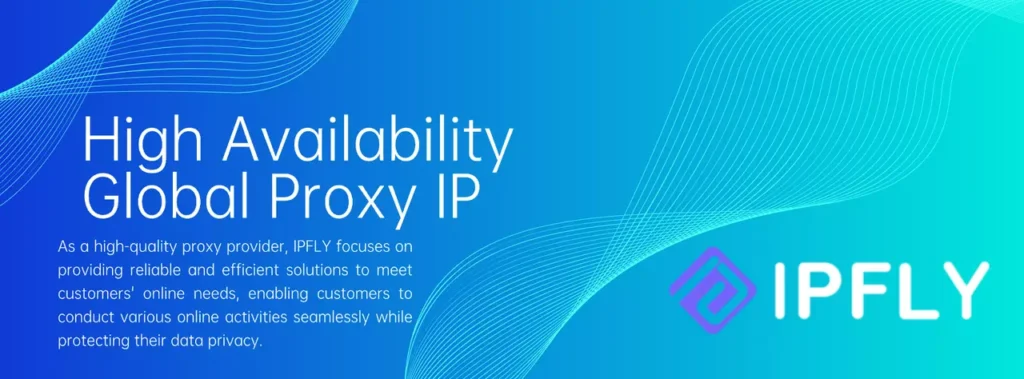Clean IP addresses form a critical foundation in network management, representing IP addresses free from blacklisting, abuse associations, or contamination by malicious activities. In the structured landscape of internet protocols, a clean IP is one that has not been flagged by security databases or service providers for behaviors such as spamming, DDoS attacks, or unauthorized scraping, ensuring it remains viable for legitimate use. This concept is essential in environments where IP reputation directly influences access to services, much as a pristine laboratory sample enables accurate experimental results without interference from impurities.
From a technical standpoint, clean IPs operate within the TCP/IP framework, where their integrity is maintained through vigilant monitoring and rotation practices. Blacklisting occurs when an IP accumulates negative signals in global registries like Spamhaus or DNSBL, triggering blocks by email servers, web hosts, or firewalls. Maintaining a clean IP involves proactive measures such as regular audits and ethical usage, preventing the buildup of digital “residue” that could compromise connectivity. This guide provides a detailed examination of clean IP principles, their importance in secure networking, and practical implementation strategies, structured as a tutorial to equip readers with the knowledge for effective management.

The Technical Foundations of Clean IP Addresses
An IP address serves as the unique identifier for devices on a network, facilitating the routing of data packets across the internet via protocols like IPv4 and IPv6. A clean IP is distinguished by its absence of negative associations: it lacks entries in blocklists, has low complaint rates in email metrics, and exhibits normal traffic patterns that do not trigger anomaly detection algorithms. These algorithms, often based on machine learning models, analyze factors such as connection volume, geographic consistency, and user-agent diversity to assign reputation scores.
In practice, IP contamination arises from misuse, such as bulk emailing without consent or automated requests exceeding rate limits, leading to delistings that can persist for weeks. Clean IPs, conversely, support seamless operations in applications requiring trust, including API integrations, e-commerce transactions, and content delivery. Their maintenance aligns with network hygiene principles, where regular scanning tools query databases to verify status, ensuring compliance with standards set by organizations like the Internet Engineering Task Force (IETF). This foundation is vital for professionals in cybersecurity and web development, where a tainted IP can disrupt workflows and erode service reliability.
How Clean IPs Are Maintained: Mechanisms and Best Practices
Preserving a clean IP involves a systematic approach to monitoring and mitigation, comparable to quality control processes in manufacturing where defects are identified and corrected before they propagate. The mechanism begins with assignment: ISPs allocate IPs from pools, and users can request dedicated ranges to avoid shared contamination. Once assigned, maintenance requires ongoing vigilance through tools that perform reverse DNS lookups and blacklist checks, generating reports on potential issues.
Key mechanisms include:
Blacklist Monitoring: Automated scripts query registries daily, alerting on listings and providing delisting procedures, which often involve submitting abuse reports with evidence of corrective actions.
Traffic Analysis: Employing network analyzers to track outbound patterns, ensuring compliance with rate limits and avoiding suspicious bursts that could flag the IP.
Rotation Policies: For high-volume operations, implementing IP pools where addresses are cycled to distribute load, preventing overuse on any single one.
Best practices emphasize ethical usage: limit automated requests, incorporate delays to simulate human behavior, and document all activities for audit trails. This proactive stance not only sustains cleanliness but also enhances overall network performance, reducing latency from blocks and improving deliverability in communications.
The Importance of Clean IPs in Modern Networking Applications
Clean IPs are indispensable in a range of applications where reputation directly impacts functionality. In email marketing, they ensure high deliverability rates, as providers like Gmail prioritize messages from untainted sources, avoiding spam folders through sender score evaluations. For web scraping and data collection, a clean IP prevents CAPTCHA challenges or bans, allowing uninterrupted gathering of public information for research or analytics.
In e-commerce and API services, they facilitate smooth transactions by evading fraud detection systems that scrutinize IP history for anomalies. Security teams use clean IPs for penetration testing, simulating attacks from neutral origins to assess vulnerabilities without prior flags. The broader implication is enhanced trust in digital ecosystems: clean IPs contribute to a healthier internet by discouraging abuse, fostering environments where legitimate users thrive without the shadow of collective punishment from shared tainted addresses.
Practical Tutorials: Achieving and Verifying Clean IP Status
To implement clean IP management, the following tutorials offer structured procedures, designed as methodical exercises to build proficiency in monitoring and correction.
Tutorial 1: Initial IP Assessment and Blacklist Check
1.Determine your current IP using a command-line tool: On Windows, enter ‘ipconfig’ in the command prompt; on macOS or Linux, use ‘ifconfig’ or ‘ip addr show’. Note the public IP via an external query site.
2.Scan for blacklists with a dedicated tool, inputting the IP to query databases like Spamhaus or SORBS; review results for any flags, noting severity levels from temporary to permanent.
3.Document findings in a spreadsheet, including date, score, and reasons, to track trends over time.
4.If listed, initiate delisting by submitting a form with proof of remediation, such as updated security policies.
This foundational assessment establishes a baseline, enabling proactive hygiene.
Tutorial 2: Implementing Rotation for Sustained Cleanliness
1.Set up a pool of IPs through your ISP or proxy service, aiming for 5-10 addresses in diverse ranges to distribute activity.
2.Configure rotation in network settings or scripting: Use a simple loop to cycle IPs every 100 requests, incorporating random delays (1-5 seconds) to mimic organic traffic.
3.Test the setup by simulating loads, monitoring with tools that log connection success rates and blacklist queries post-rotation.
4.Refine based on data: Adjust intervals if scores dip, ensuring each IP remains under usage thresholds like 1,000 daily connections.
This method distributes risk, preserving individual IP purity.
Tutorial 3: Advanced Monitoring and Remediation Workflow
1.Integrate automated alerts using scripting to run daily blacklist checks, emailing results if scores fall below 90%.
2.For remediation, create a template for abuse reports, including logs of traffic patterns to demonstrate compliance.
3.Simulate contamination: Assign a test IP to high-volume tasks, then observe delisting processes, quantifying recovery time from block to clean status.
4.Scale for teams: Develop shared dashboards to visualize IP health across multiple addresses, using metrics like average reputation score.
This comprehensive workflow turns maintenance into a systematic discipline, adaptable for professional environments.
Integrating Clean IPs with Proxy Services for Enhanced Management
For robust clean IP handling, proxy services play a complementary role by providing vetted address pools. IPFLY, for example, offers clean residential IPs tailored for applications requiring untainted connectivity, allowing seamless integration to maintain reputation during tasks like data verification or secure browsing, without the hassle of manual rotations.
Start now! Visit IPFLY.net to experience excellent proxy services and join the IPFLY Telegram community for the latest strategies—master cutting-edge tips and exclusive resources, and let proxies efficiently empower all your needs!

Ethical and Practical Considerations in Clean IP Management
Ethical management of clean IPs demands adherence to usage policies, focusing on legitimate activities to avoid contributing to global blacklists. Practically, regular audits and documentation ensure compliance, while educating teams on best practices prevents inadvertent contamination. As networks grow more interconnected, clean IPs will remain a cornerstone of trustworthy digital infrastructure, supporting innovation without compromising security.
In summary, clean IP addresses embody the precision and discipline required for reliable networking, offering a pathway to unhindered digital operations. Through these tutorials, readers can cultivate their own strategies, achieving a balance of accessibility and integrity in an increasingly complex online landscape.


